- Yokohama-shi Top Page
- Business
- Support for SMEs
- Promotion of Skilled Work
- Yokohama Meister Introduction
- Hiromu Takahashi Meister (Tatami)
Here's the text.
Hiromu Takahashi Meister (Tatami)
Last Updated February 1, 2021
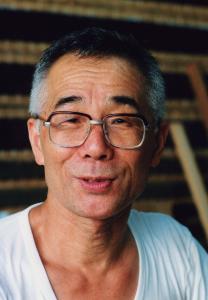
Hiroshi Takahashi Takahashi
Tatami
Fiscal 2000 Selection (Fifth term)
Lives and works in Kanagawa Ward
- Born in 1936, Born in Yokohama
- Take over the Takahashi Tatami store
- Class 1 tatami mat technician, vocational training instructor license, Monozukuri Meister (Ministry of Health, Labour and Welfare)
- He has served as a skill development manager of the Federation of Yokohama Tatami Association, a skill test committee member, and a skill contest member in Kanagawa Prefecture.
Passion and inquisitiveness as a tatami craftsman
Crafting tatami mats began with Takahashi's philosophy as a craftsman and his passion for art, saying, "It's embarrassing to know anything about tatami mats if you don't know anything about tatami mats."
Takahashi says, "When I made a job tatami mat, I found a way to prevent both sides from showing seams," and "I don't mean what this will be, but I think I'm making it because I like it." When I'm most happy as a craftsman, it's time when I'm praised by customers.
"Tatami can't be made on the spot, so I'm glad if what I brought back and completed once fits properly in the original place," Mr. Takahashi says every day.
Meister's skill
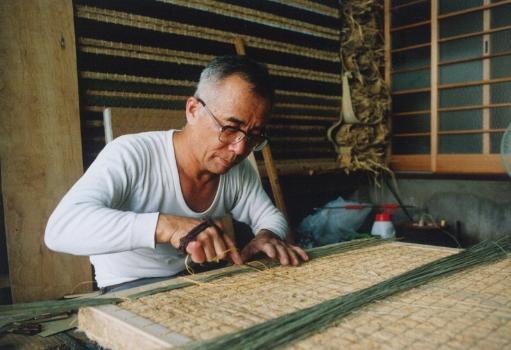
The rush made of tatami mats is a natural material, so the quality is not constant.
For this reason, with the many years of experience of craftsmen, he used various sizes such as "knives", "sewing machines" and "sew needles" for sewing tatami mats, "migrating" for measuring the width of the helicopter, and "mulberry" for measuring the thickness. Make full use of tools.
Occupational tatami mats, such as "Goshinza", where the sacred body is enshrined, and "hexagonal tatami mats" as decorative tatami mats, are very difficult to match the patterns of the corners.
In creating a cube tatami mat "Saikoro Tatami", which has six flat surfaces, unlike ordinary flat stitching, we use a technique to directly sew the tatami mat, and Mr. Takahashi devised the technique. And spread it.
And the basics of Kanto style are based on Mr. Takahashi's work.
Profile
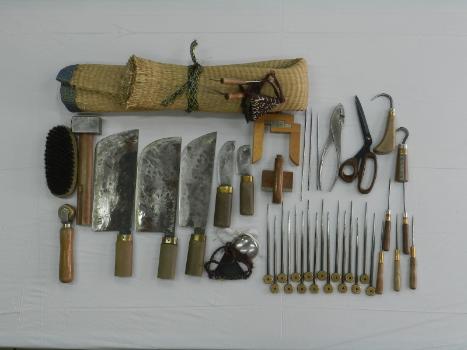
As the fifth generation of the Takahashi Tatami store in Yokohama since the Edo period, he continued training at the same time as graduating from junior high school, and became a shopkeeper at the age of 37.
One photo I met when I was 40 years old triggered me to create uniquely shaped tatami mats used in shrines and temples on my own, developing various techniques and creating works.
His work is used at more than 100 shrines and temples nationwide, including Oyama Afurijinja.
Major Awards
- 1986 Kanagawa Prefectural Excellent Skilled Engineer Award (Governor of Kanagawa Prefecture)
- Received the 1992 Skill Certification Committee Award (Chairman of Kanagawa Vocational Ability Development Association)
- 1997 Yokohama City Skilled Workers Award (The Mayor of Yokohama)
- Received the 2001 Skill Test Committee Award for Achievement (Ministry of Health, Labor and Welfare)
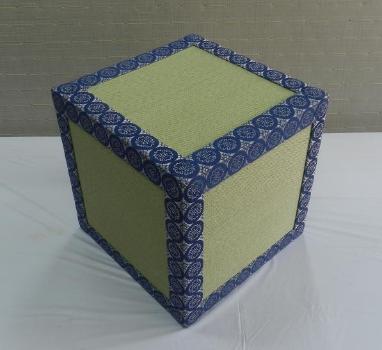
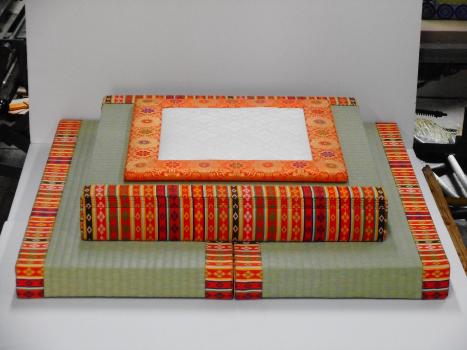
You can meet the skills of Meister here!
Takahashi Tatami Store
1-17-26, Shimosueyoshi, Tsurumi-ku, Yokohama-shi
Telephone: 045-581-0482
Inquiries to this page
Employment and Labor Division, Civil Economic and Labor Department, Economic Affairs Bureau
Telephone: 045-671-4098
Telephone: 045-671-4098
Fax: 045-664-9188
Email address: ke-ginou@city.yokohama.jp
Page ID: 273-207-614







